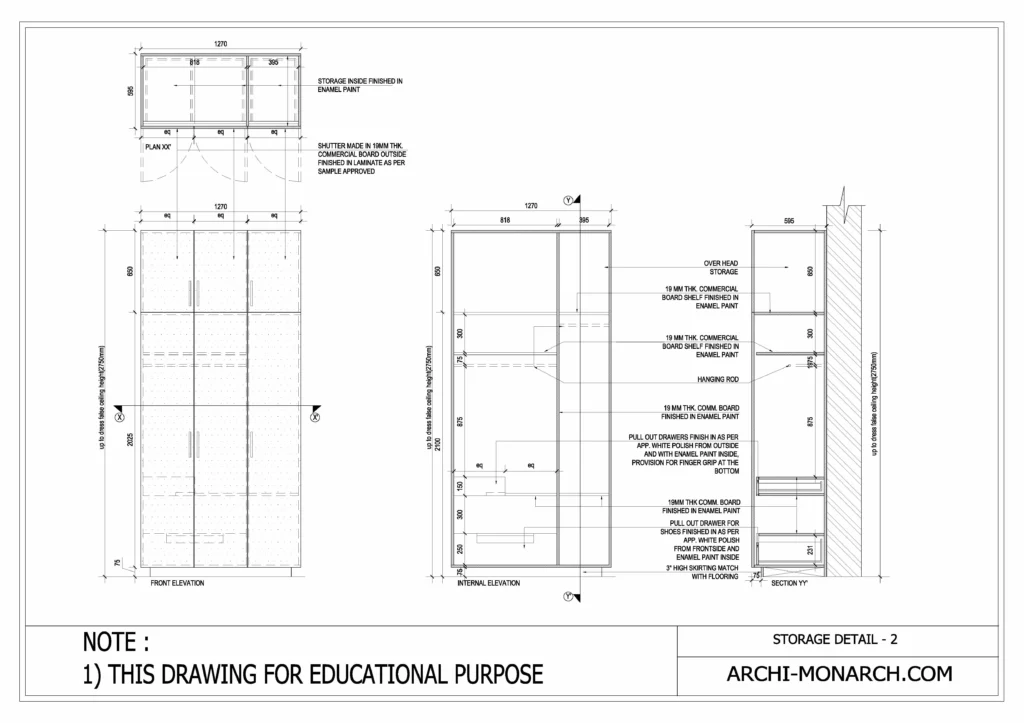In architecture, storage (cupboard) is an important consideration in the design of any building or space. It is important to provide enough storages to meet the needs of the occupants or users of the space, while also considering the overall aesthetic and functional design of the building.
There are many different ways that storage can be incorporated into the architecture of a building.
Some common examples include:
- Built-in storage: Built-in storage is storage that is integrated into the design of the building. This could include things like built-in bookshelves, cabinets, and drawers.
- Closets: Closets are a common type of storage in residential architecture. They can be used to store clothes, shoes, and other personal items.
- Pantries: Pantries are a type of storage specifically designed for food and kitchen supplies. They are often found in residential and commercial kitchens.
- Garages: Garages are a common type of storage in residential architecture. They are used to store vehicles and other large items.
- Basements and attics: Basements and attics are often used for storage in residential architecture. They provide additional space for storing items that are not used on a regular basis.
Overall, the design of storages in architecture should consider the needs of the occupants or users of the space, the layout and function of the building, and the overall aesthetic of the design.
If you want to know about the submission drawing or lift lobby and atrium detail or standard detail, please click the link.
Image of storages detail (cupboard) and downloadable (in DWG) link below

Storages (cupboard) detail drawing – 1
A storages detail drawing is a technical drawing that shows the design and construction of a storages system. This could include things like the materials and dimensions of the storage unit, the types of items that will be stored, and any special features or considerations that need to be taken into account.
Storages detail drawings are often used in construction, manufacturing, and other industries where detailed and accurate information about storage systems is necessary. They may be used to communicate the design of a storages system to contractors or to provide instructions for assembling or installing the system.
There are many different elements that may be included in a storages detail drawing, depending on the specific needs and requirements of the project.
Some common elements that may be included in a storages detail drawing are:
- Dimensions and layout of the storage unit
- Materials used in the construction of the unit
- Type of storage system (e.g. shelving, cabinets, drawers, etc.)
- Load-bearing capacity of the unit
- Finish or coating applied to the unit
- Any special features or accessories, such as locks or labeling systems
- Any safety or accessibility considerations
- Any special installation or maintenance requirements
In addition to these elements, a storages detail drawing may also include notes, cross-references to other drawings, and other information that is relevant to the design and construction of the storages system.
Our tips to help you improve your architectural storage (cupboard) detailing.
